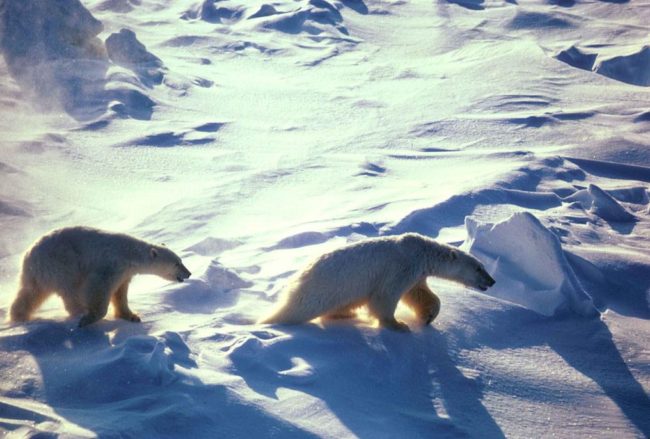
Warming in the southern Beaufort Sea is leading to some surprising biological changes for the region’s polar bears. But recent findings related to the bears’ health warns of other challenges coming down the line.
When scientists go into the field to study the Beaufort Sea polar bears, they collect samples from the sedated bears. A little tuft of fur is flown all the way from the Arctic to a lab on the east coast.
Melissa McKinney hasn’t seen the bears first hand, but since 2004 she’s come in contact with their hair inside a lab at the University of Connecticut. She’s using the hair to look for mercury.
“Most of the mercury that is present in the environment right now is due to human emissions,” McKinney said.
And that mercury makes its way up the food web: first in fish and later in the ringed seals that eat the fish. By the time it gets to the polar bears, the mercury is super concentrated, and McKinney says it can have toxic effects. The Beaufort bears in particular are thought to have some of highest levels of mercury in the Arctic.
McKinney expected to see some fluctuation in mercury levels over time.
“That would be what we would anticipate,” she said.
But over a seven year stretch, she found the numbers have dropped by more than half.
“Well, I was surprised,” she said. “I thought that we might see some variation, but I was surprised at the extent of the decline that occurred over a relatively short period of time.”
That sounds like a good thing, but that information tells scientists something else.
“The decline in mercury in the Southern Beaufort Sea can largely be explained by their diet and condition,” McKinney said.
Instead of dining on ringed seal out on the ice, more polar bears in the Beaufort Sea are coming on shore, where they’re consuming bowhead whale scraps leftover from subsistence hunts.
McKinney says there’s only so much of that food that can go around.
“In the short term, ‘yes.’ We see declines in terms of mercury,” McKinney said. “But what will it mean in the long term when we have more bears on shore and more bears using that resource?”
She says while this study is about polar bears in the Beaufort Sea, it also reveals something about us: The implications of warming are a lot more varied than we thought.
